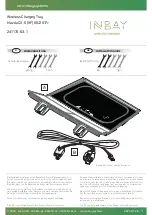
Important safety notes
If you fail to adapt your driving style, the
driving safety systems can neither reduce the
risk of accident nor override the laws of
physics. Driving safety systems are merely
aids designed to assist driving. You are
responsible for the distance to the vehicle in
front, for vehicle speed and for braking in
good time. Always adapt your driving style to
suit the prevailing road/weather conditions,
as well as the traffic conditions and maintain
a safe distance to the vehicle in front. Drive
carefully.
i
Please note that the driving safety
systems described only work as effectively
as possible when there is adequate contact
between the tires and the road surface. Pay
particular attention to the information
regarding tires, recommended minimum
tire tread depths etc. in the "Wheels and
tires" section (
Y
page 310).
In wintry driving conditions, always use
winter tires (M+S tires) and if necessary,
snow chains. Only in this way will the
driving safety systems described in this
section work as effectively as possible.
ABS (Anti-lock Braking System)
Important safety notes
i
Observe the "Important safety notes"
section (
Y
page 59).
ABS regulates brake pressure in such a way
that the wheels do not lock when you brake.
This allows you to continue steering the
vehicle when braking.
ABS works from a speed of about 5 mph
(8 km/h) upwards, regardless of road-surface
conditions. ABS works on slippery surfaces,
even when you only brake gently.
G
WARNING
If the ABS malfunctions, other driving systems
such as the BAS or the ESP
®
are also switched
off. Observe indicator and warning lamps that
may come on as well as messages in the
multifunction display that may appear.
If the ABS malfunctions, the wheels may lock
during hard braking, reducing the steering
capability and extending the braking distance.
The
!
warning lamp in the instrument
cluster lights up when the ignition is switched
on. It goes out when the engine is running.
Braking
If ABS intervenes when braking, you will feel
a pulsing in the brake pedal.
X
If ABS intervenes: continue to depress the
brake pedal with force until the braking
situation is over.
X
To make a full brake application:
depress the brake pedal with full force.
The pulsating brake pedal can be an
indication of hazardous road conditions, and
functions as a reminder to take extra care
while driving.
G
WARNING
Do not pump the brake pedal. Use firm, steady
brake pedal pressure instead. Pumping the
brake pedal defeats the purpose of the ABS
and significantly reduces braking
effectiveness.
BAS (Brake Assist System)
i
Observe the "Important safety notes"
section (
Y
page 59).
BAS operates in emergency braking
situations. If you depress the brake pedal
quickly, BAS automatically boosts the braking
force, thus shortening the stopping distance.
X
Keep the brake pedal firmly depressed until
the emergency braking situation is over.
ABS prevents the wheels from locking.
The brakes will function as usual once you
release the brake pedal. BAS is deactivated.
Driving safety systems
59
Safety
Z
Содержание 2012C-Class Sedan
Страница 1: ...C Class Operator s Manual I n f o r ma t i o nP r o v i d e db y...
Страница 4: ...I n f o r ma t i o nP r o v i d e db y...
Страница 70: ...68 I n f o r ma t i o nP r o v i d e db y...
Страница 92: ...90 I n f o r ma t i o nP r o v i d e db y...
Страница 122: ...120 I n f o r ma t i o nP r o v i d e db y...
Страница 136: ...134 I n f o r ma t i o nP r o v i d e db y...
Страница 254: ...252 I n f o r ma t i o nP r o v i d e db y...
Страница 292: ...290 I n f o r ma t i o nP r o v i d e db y...
Страница 310: ...308 I n f o r ma t i o nP r o v i d e db y...
Страница 342: ...340 I n f o r ma t i o nP r o v i d e db y...
Страница 356: ...Order no 6515 0749 13 Part no 204 584 35 82 Edition A 2012 2045843582 2045843582 I n f o r ma t i o nP r o v i d e db y...
















































